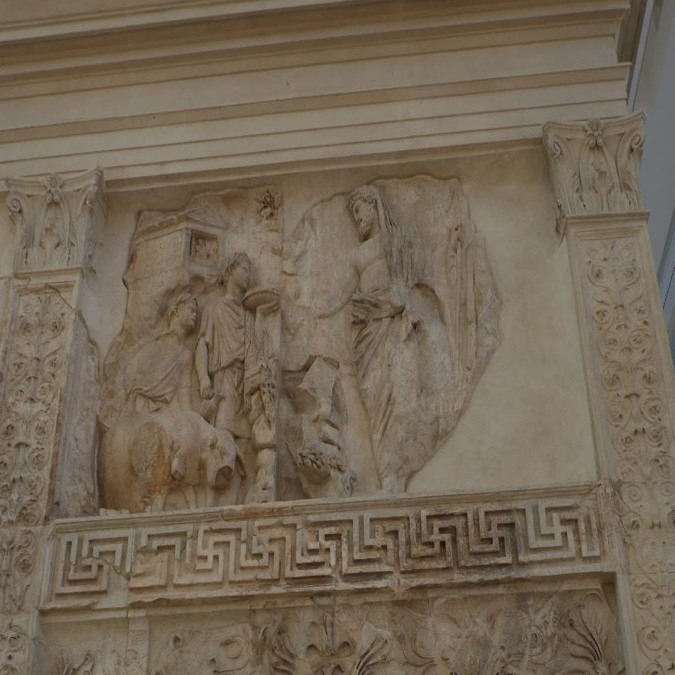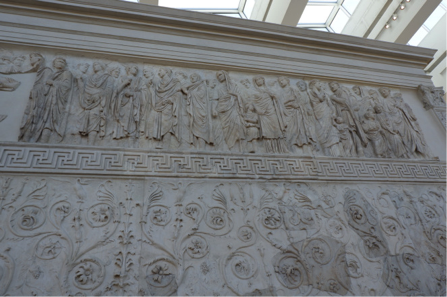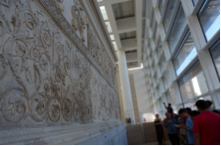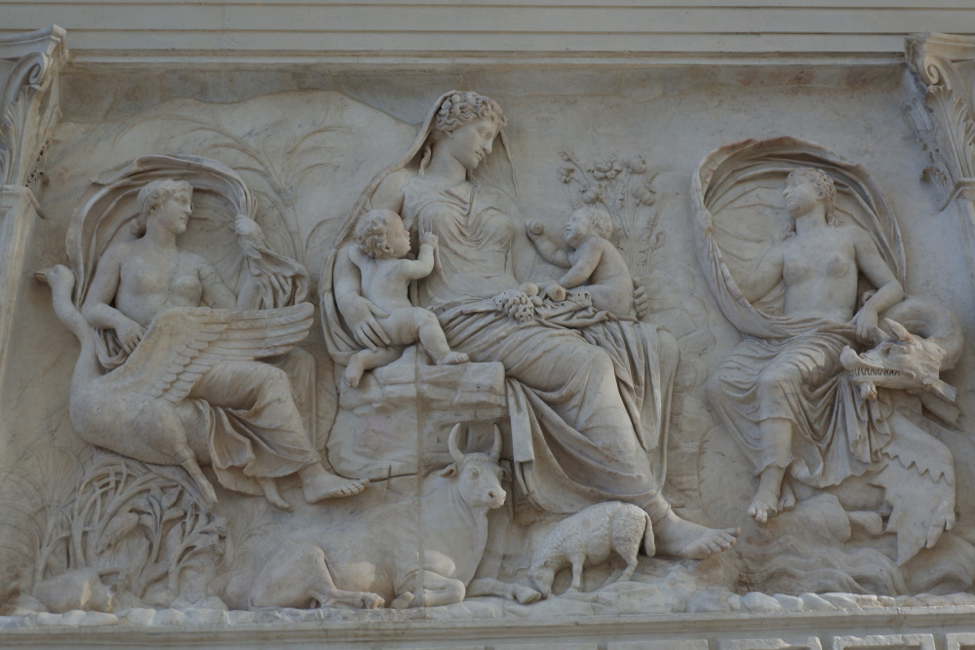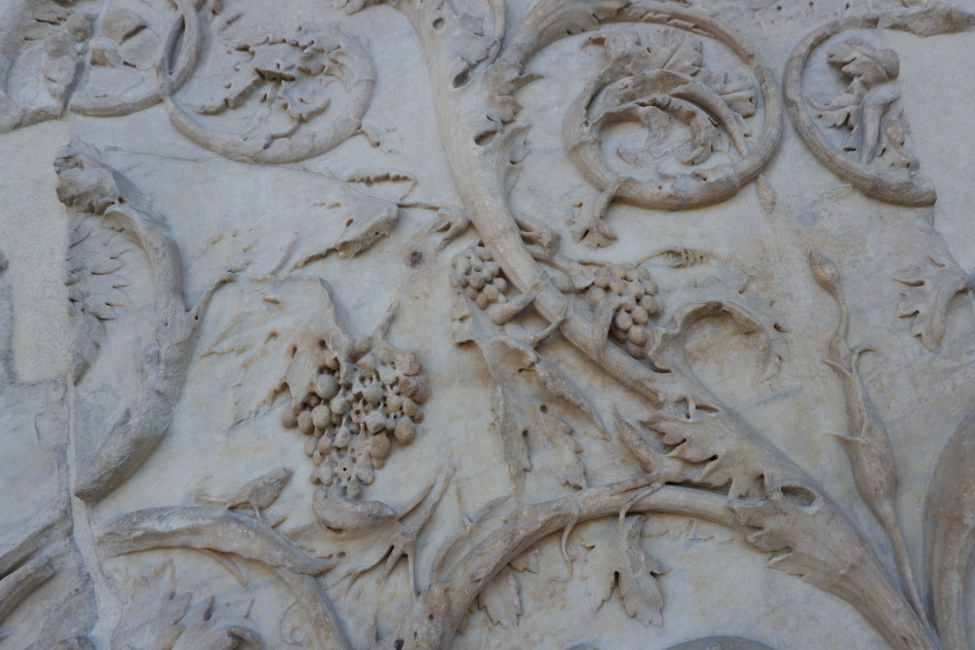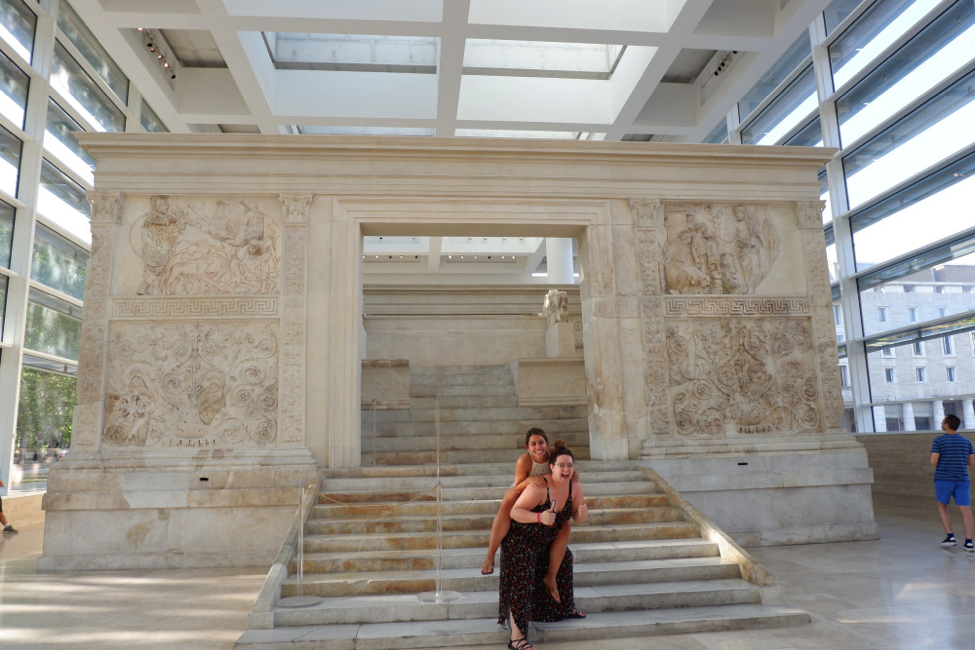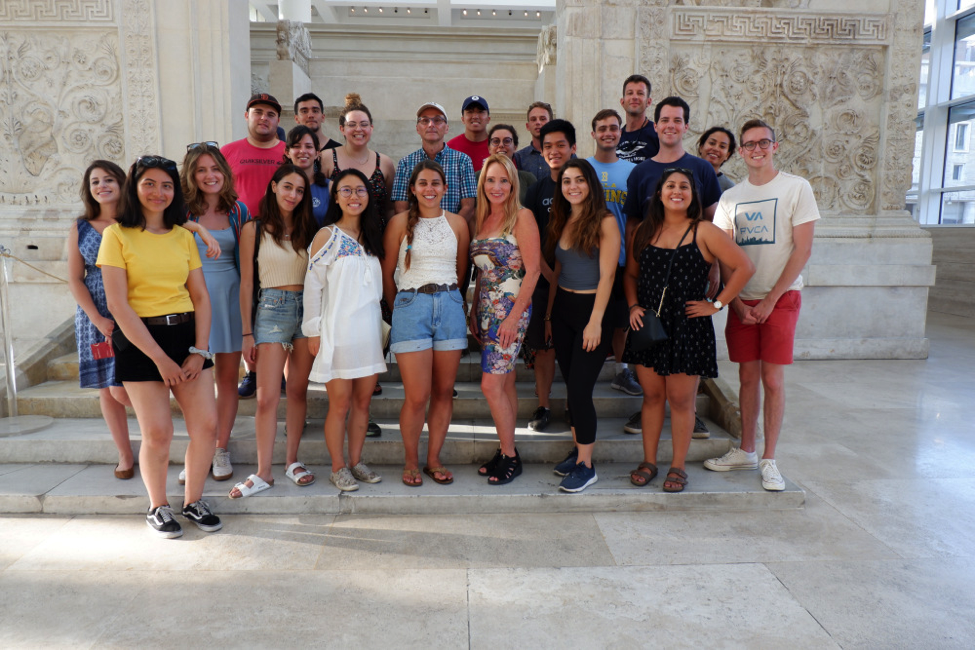All around the bottom of the monument is a frieze that depicts acanthus leaves and bunches of grapes. Acanthus leaves in ancient Rome were symbolic of long life or immortality. Grapes were symbolic of fertility and prosperity. Perhaps, by using these plants, Augustus was trying to say that he had brought long-lasting peace to Rome and has made the empire prosperous and wealthy. Also, hidden among the acanthus leaves and grapes, are small depictions of animals. The most famous is a chick escaping from a nest being attacked by a snake, which many scholars believe represent Aeneas escaping from the Trojan war.
The Inside
You can actually walk around inside of the monument, which is very cool. The inside features carved garlands connected by cow skulls. Garlands were used as decorations during celebrations and also symbolize wealth and prosperity. The cow skulls were most likely symbolic of the animal sacrifices the ancient Romans performed as a way to appease their gods. The altar inside is fairly simple, and shows scenes of sacrifice.
Modern History
The first fragments of sculpture from the monument were discovered in the 1600’s and shipped all over Italy, but archeologists did not realize what it was until the late 1800’s when a scholar identified the pieces using information from Augustus’ memoirs. In the early 1900’s, they attempted to excavate it, but it was underneath a Renaissance Piazza and a famous theater, and the excavations were compromising these buildings, so they stopped. Then, for the 2000 year anniversary of the birth of Augustus in 1938, Mussolini decided he wanted to excavate it. The excavation was an extraordinary feat of engineering that involved freezing the ground water to support the buildings above while the Ara Pacis was dug out piece by piece. It was then reassembled where it is now. Originally, Mussolini commissioned a building to be put up around the altar, but by the early 2000’s, it was in poor shape. The American architect Richard Meier (the same guy who designed the Getty Museum in Los Angeles) won the project to rebuild the building. This created some controversy both because he was American and because the building is very modern and does not match with most of the buildings in Rome. The building by Richard Meier is the Ara Pacis’s current home.




